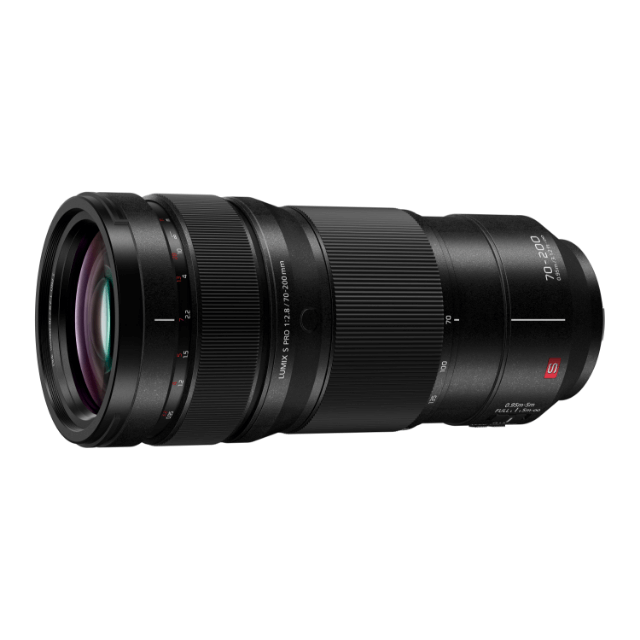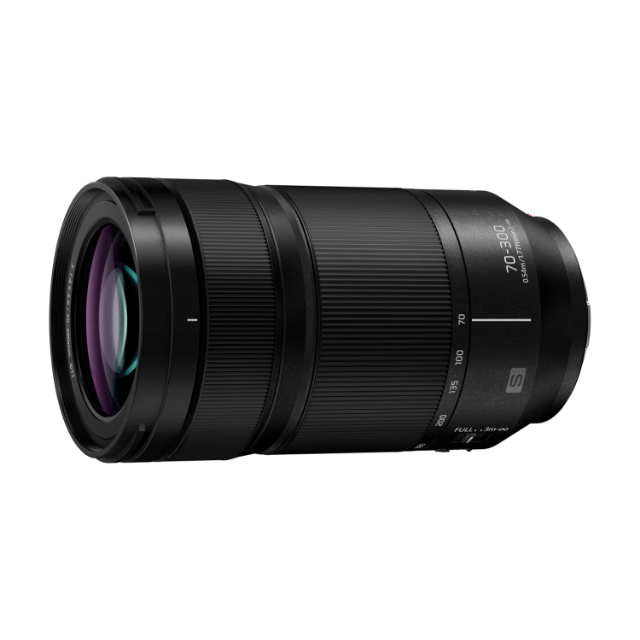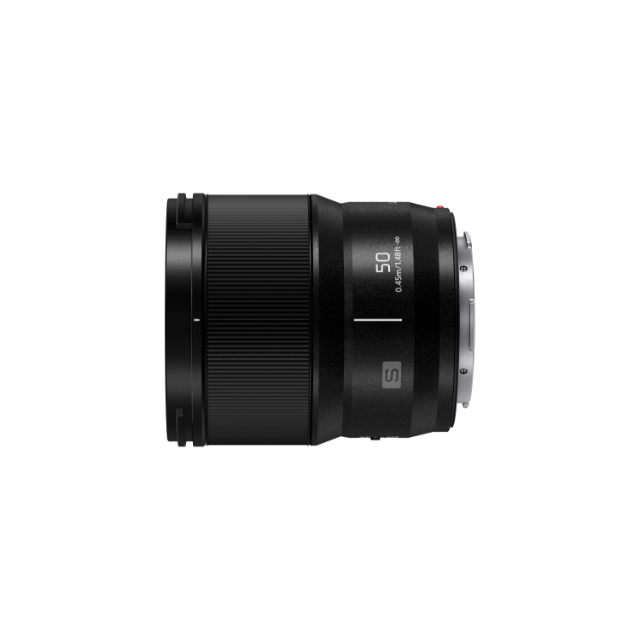
This is the Optical Design Department- Seventh Edition [LUMIX S 20-60 mm F3.5-5.6]
Hello, everyone.
In "This is the Optical Design Department", we in the Optical Design Department will explain the lens designs and their features, as well as the dedication and philosophy behind our work that you will not find in our catalogues or websites.
For those who are considering purchasing a camera lens, we encourage you to learn more about the design philosophy behind LUMIX lenses, and for those who already own a LUMIX lens, we hope you enjoy learning about the unparalleled attention to detail and thought that goes into the superb image quality you enjoy in your photography.
This is an article that explains various lenses written by developers full of technical jargon. By reading this, you too will be peering into the depths of enthusiasm for lens collecting.
The seventh article is about the LUMIX S 20-60 mm F3.5-5.6, the kit lens for the LUMIX S5II series and S5IIX series, explained by Kudo.
Introduction
In 2020, the LUMIX S1 (hereafter "S5") was released as a model that embodied the appeal of the LUMIX S5, the high-end model in our full-frame mirrorless camera range, while aiming for a more compact size.
The LUMIX S 20-60 mm F3.5-5.6 is an S lens(*1) designed as a compact and affordable standard zoom to complement the size of the original S5. Its standout feature is that it offers a 3x zoom range starting from an ultra-wide 20 mm — the first standard zoom lens in the industry to do so at the time.
*1 LUMIX offers two lines of lenses: S PRO lenses and S lenses. S PRO lenses are planned, designed, developed, and manufactured to meet LUMIX's own strict S PRO standards, while S lenses are developed with an emphasis on portability and usability alongside high optical performance.
Lightweight and compact, this lens covers a versatile range from an ultra-wide 20 mm to a standard 60 mm, with the wide-angle end allowing you to shoot as close as 5 cm from the end of the lens barrel.
This makes it well-suited to a variety of situations — from landscape photography that makes the most of perspective, to casual snapshots and tabletop photography.
In this article, we will introduce four key features of the LUMIX S 20-60 mm F3.5-5.6, along with a few highlights of its optical design.

LUMIX S5II and LUMIX S 20-60mm F3.5-5.6
A new standard zoom lens starting at 20 mm
Since the days of SLR cameras, standard zoom lenses have generally started at 24 mm or 28 mm (equivalent focal length in 35 mm format).
However, market research has shown that with the rise of selfies and vlogging, the increasingly wide-angle capabilities of smartphone cameras, and the growing tendency of cropping images after shooting, many users now find the conventional 24 mm focal length limiting. As a result, there is increasing demand for ultra-wide-angle lenses with even shorter focal lengths.
Therefore, the ideal new standard zoom lens to meet the needs of the times was a compact zoom lens covering the range from 20 mm ultra-wide to standard.
At a 16 mm focal length on the wide end, perspective tends to be over-emphasised, and the angle of view can feel too wide for general use. In this respect, the 20 mm strikes a good balance — offering the benefits of enhanced perspective without the discomfort of it feeling too extreme.
However, there remains a difference of around 10 degrees in the angle of view compared to the typical 24 mm wide end, meaning a significantly wider range of light must be captured. To put this into perspective, a 10-degree difference at the wide end is greater than the difference between 70 mm and 60 mm at the telephoto end (around 6 degrees). This made achieving both a 20 mm to 60 mm focal length and a compact, lightweight design a major challenge in the lens's development.

Angle of view for 20 mm and 24 mm focal lengths (red box)

Angle of view for 60 mm and 70 mm focal lengths (red box)
The key optical design that solved this problem was the introduction of a positive-focus lens type for the first group, taking advantage of the large mount diameter and short flange-back distance.
The diagram below shows the lens configuration of the LUMIX S 20-60 mm F3.5-5.6.

The five-group positive-negative-positive-negative-positive zoom configuration provides a symmetrical configuration centred on the aperture from wide end to telephoto end, allowing good correction of aberrations throughout the zoom range.
In addition, the movement of the first group during zooming allows the zoom ratio to be increased while maintaining the compact size of the lens. Distortion at the wide end is also minimised by placing the lens with positive power first.
This lens configuration is made possible in large part by the L-mount's large diameter of 51.6 mm and short flange-back distance of 20 mm.
High image rendering performance across the zoom range
It may be a kit lens, but the LUMIX S 20-60 mm F3.5-5.6 offers excellent image rendering performance across the entire zoom range.
As shown in the lens configuration diagram above, the power arrangement of each lens group has been optimised in a five-group zoom configuration, effectively minimising aberrations that tend to occur when zooming. Furthermore, by carefully positioning two aspherical lenses, three ED lenses(*2), and one high index UHR lens(*3), the design reduces spherical aberration, chromatic aberration, and field curvature — ensuring consistently high image quality across the zoom range.
*2 Extra-low dispersion lens.
*3 Ultra high refractive index lens.
In addition, we are striving for even higher component precision in our manufacturing processes, and we are introducing optimum optical adjustments. The higher the precision of individual components, the greater the freedom available in optical design — making manufacturing and design closely linked.
Without going into too much detail, we have also introduced a new manufacturing method for this product. The mechanism design has been carefully considered to achieve the most compact form possible with the fewest parts. By rethinking how components are connected, several functions have been integrated into individual parts, contributing to a smaller, lighter lens.
Of course, miniaturisation also makes the required dimensional accuracy more demanding, but we have achieved a strict dimensional accuracy of less than a few micrometres in error.
The diagram below shows the MTF chart for the LUMIX S 20-60 mm F3.5-5.6. As noted above, the synergy between optical and mechanical design has resulted in consistently high-resolution performance extending to the very edges of the image — both at the wide and telephoto ends — despite this being a compact 3x zoom lens starting from an ultra-wide 20 mm.

The photo below was taken wide open, but even the patterns on the buildings are clearly resolved. Don’t be misled by the fact that this is a kit lens — just take a look at its image rendering performance.

LUMIX S5II LUMIX S 20-60 mm F3.5-5.6 F3.5 SS 1/640 ISO 100 (shot at 20 mm)
Expand your creative horizons with a minimum focusing distance of 15 cm
Next, let's look at the minimum focusing distance. We believe that reducing the size of the lens barrel and shortening the minimum focusing distance is directly related to ease of use, and we have made it possible to get as close as possible while maintaining the size of the lens barrel.
The minimum focusing distance of the LUMIX S 20-60 mm F3.5-5.6 is approximately 15 cm at the wide end and 40 cm at the telephoto end. The minimum focusing distance is defined as the distance from the subject to the focusing plane. This means that you can get as close as about 5 cm from the subject to the end of the lens at the wide end.
To reduce the minimum focusing distance, the focus stroke must be maintained by increasing the distance between the focusing lens group and the final lens group. At the telephoto end, it was difficult to shorten the focus stroke further due to the constraints of the lens barrel size, but the minimum focusing distance was shortened by securing as much of the focus stroke as possible near the wide end.
The minimum focusing distance of 15 cm is possible in the focal length range from 20 mm to 26 mm, with maximum magnification of 0.43x at 26 mm. The ability to get closer at the wide end gives you more freedom to compose your shots, such as getting close to your subject while taking in the background.

LUMIX S1H LUMIX S 20-60 mm F3.5-5.6 F6.3 SS 1/320 ISO 100 (shot at 20 mm)

LUMIX S1 LUMIX S 20-60 mm F3.5-5.6 F3.5 SS 1/1000 ISO 200 (shot at 20 mm)
When shooting at the minimum focusing distance, the surface of the lens on the side closest to the subject may come into contact with the subject or a nearby object and become dirty. To prevent this, the surface of the lens on the side closest to the subject is coated with fluorine to prevent smudging and make it easy to remove any smudges.
In addition, all S lenses are dust, splash, and low temperature resistant. Because the lens needs to deliver consistent performance at both low and high temperatures, as well as under normal conditions — particularly in terms of AF performance and zoom tracking — the LUMIX S 20-60 mm F3.5-5.6 is equipped with a temperature sensor inside the lens. This sensor detects temperature changes and applies compensation to the amount of focus movement, preventing shifts in focus position caused by fluctuations in temperature.
As a result, you can use the lens with confidence in a wide range of situations, whether by the water's edge or up in the mountains.
High video performance with a special focus on lens breathing
LUMIX is an indispensable partner for a wide range of creators who take on the challenge of creating videos as well as stills, and we create products with the aim of becoming a brand that helps them create the best possible work of art.
One of the functions required of lenses for video performance is to minimise lens breathing.
Lens breathing occurs when the angle of view changes during focusing. If there is a large amount of lens breathing, the composition of the image will also change, resulting in an image that is different from the one that was originally intended to be captured.
To minimise lens breathing, it is necessary to limit the angle of the light rays entering the focusing lens group. The LUMIX S 20-60 mm F3.5-5.6 achieves this by optimising the power of each lens group to minimise lens breathing, while also providing good correction for the various aberrations in the entire optical system.
The focusing and aperture units are also designed to be quiet during video recording. Focusing is driven by a stepping motor with high-precision microstep control and smooth acceleration/ deceleration profiles, ensuring quiet operation for smooth video recording.
In addition, all S lenses share the same careful attention to f-stop control and MF operation. The aforementioned high-precision micro-step control is also applied to the aperture, ensuring smooth aperture movement (f-stop change), even in scenes with significant changes in subject brightness or when panning during video recording. This reduces discrete exposure changes on the screen during video recording, enabling high-quality video recording.
The MF ring can be switched between non-linear and linear in the camera's menu, allowing it to be used for both still and video images. See 'Fifth Edition [LUMIX S F1.8 Series]' for a detailed explanation of this function.
Lastly

This concludes our introduction to the LUMIX S 20-60 mm F3.5-5.6. If you already own this lens, we hope you will take the opportunity to appreciate its image rendering performance.
And if you do not yet have this lens, we hope this article has helped guide you towards choosing the lens that's right for you.
Thank you for reading.






